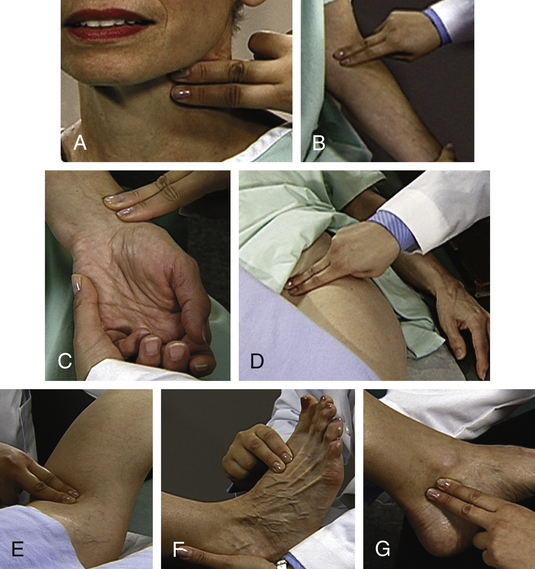Blood Vessels
Examination
| Technique | Findings |
| Peripheral Arteries | |
| Palpate arterial pulses in neck and extremities | |
| Palpate carotid, brachial, radial, femoral, popliteal, dorsalis pedis, and posterior tibial arteries, using distal pads of second and third fingers, as shown in figures below and on p. 117. | |
| EXPECTED: Femoral pulse as strong as or stronger than radial pulse. | |
| UNEXPECTED: Femoral pulse weaker than radial pulse or absent. Alternating pulse (pulsus alternans), pulsus bisferiens, bigeminal pulse (pulsus bigeminus), bounding pulse, labile pulse, paradoxical pulse (pulsus paradoxus), pulsus differens, tachycardia, trigeminal pulse (pulsus trigeminus), or water-hammer pulse (Corrigan pulse). | |
| EXPECTED: 60-90 beats/min. | |
| UNEXPECTED: Rate different from that observed during cardiac examination. | |
| EXPECTED: Regular. | |
| UNEXPECTED: Irregular, either in a pattern or patternless. | |
| EXPECTED: Smooth, rounded, or dome-shaped. | |
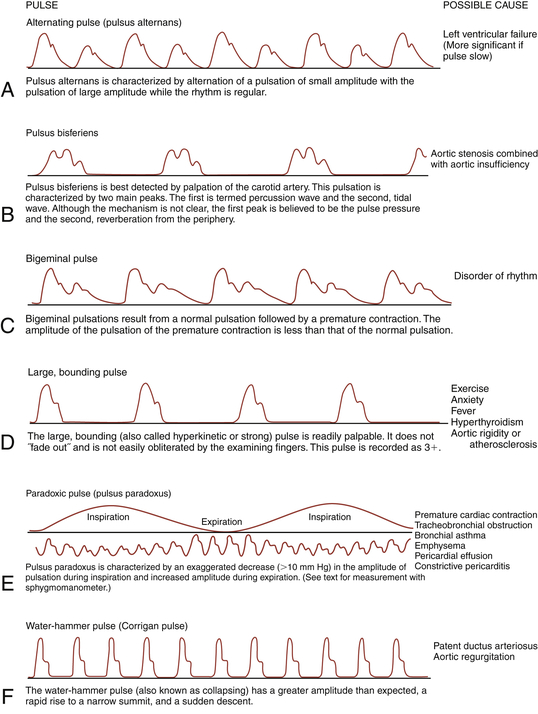 |
|
| UNEXPECTED: Bounding, full, diminished, or absent. Describe on scale of 0-4: | |
| Auscultate carotid and subclavian arteries; abdominal aorta; and renal, iliac, and femoral arteries for bruits | |
| When auscultating the carotid vessels, you may at times need to ask patient to hold breath for a few heartbeats. Auscultate with bell of stethoscope. | UNEXPECTED: Transmitted murmurs, bruits. |
| Assess for arterial occlusion and insufficiency | |
| UNEXPECTED: Dull ache accompanied by fatigue and often cramping; possible constant or excruciating pain. Weak, thready, or absent pulses; systolic bruits over arteries; loss of body warmth; localized pallor or cyanosis; delay in venous filling; or thin, atrophied skin, muscle atrophy, and loss of hair. | |
| EXPECTED: Slight pallor on elevation and return to full color as soon as leg becomes dependent. | |
| UNEXPECTED: Delay of >2 sec. | |
| Measure blood pressure | |
| Measure in both arms at least once. Patient’s arm should be slightly flexed and comfortably supported on table, pillow, or your hand. | EXPECTED: <120 mm Hg systolic and <80 mm Hg diastolic, with pulse pressure of 30-40 mm Hg (sometimes to 50 mm Hg). Reading between arms may vary by as much as 10 mm Hg. Prehypertension is now defined as a blood pressure between 120 and 139 mm Hg systolic or 80 and 89 mm Hg diastolic. |
| UNEXPECTED: Hypertension (see Chapter 2). | |
| Peripheral Veins | |
| Assess jugular venous pressure | |
| Ask patient to recline at 45-degree angle. With tangential light, observe the jugular vein. As shown in figure below, use a centimeter ruler to measure vertical distance between midaxillary line and highest level of jugular vein distention. | EXPECTED: Pressure ≤9 cm H2O, bilaterally symmetric. |
UNEXPECTED: Abnormal elevation, distention or distention on one side.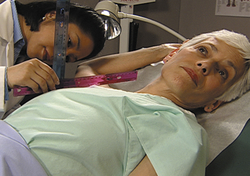 |
|
| Assess for venous obstruction and insufficiency | |
| Inspect extremities, with patient both standing and supine. | |
| UNEXPECTED: Constant pain with swelling and tenderness over muscles, engorgement of superficial veins, cyanosis. | |
| UNEXPECTED: Redness, thickening, tenderness along superficial vein. Calf pain with test for Homan sign. | |
| UNEXPECTED: Orthostatic (pitting) edema; thickening and ulceration of skin possible. | |
| Grade edema from 1+ to 4+ as follows: | |
| EXPECTED: Pressure from toe standing disappears in seconds. | |
| UNEXPECTED: Veins dilated and swollen; often tortuous when extremities are dependent and pressure does not quickly disappear. | |
| UNEXPECTED: Rapid filling of veins. | |
| UNEXPECTED: Superficial veins fail to empty. | |
| UNEXPECTED: Stripped vessel fills before pressure is released by distal finger, or blood refills entire vein when pressure is released by proximal finger. | |
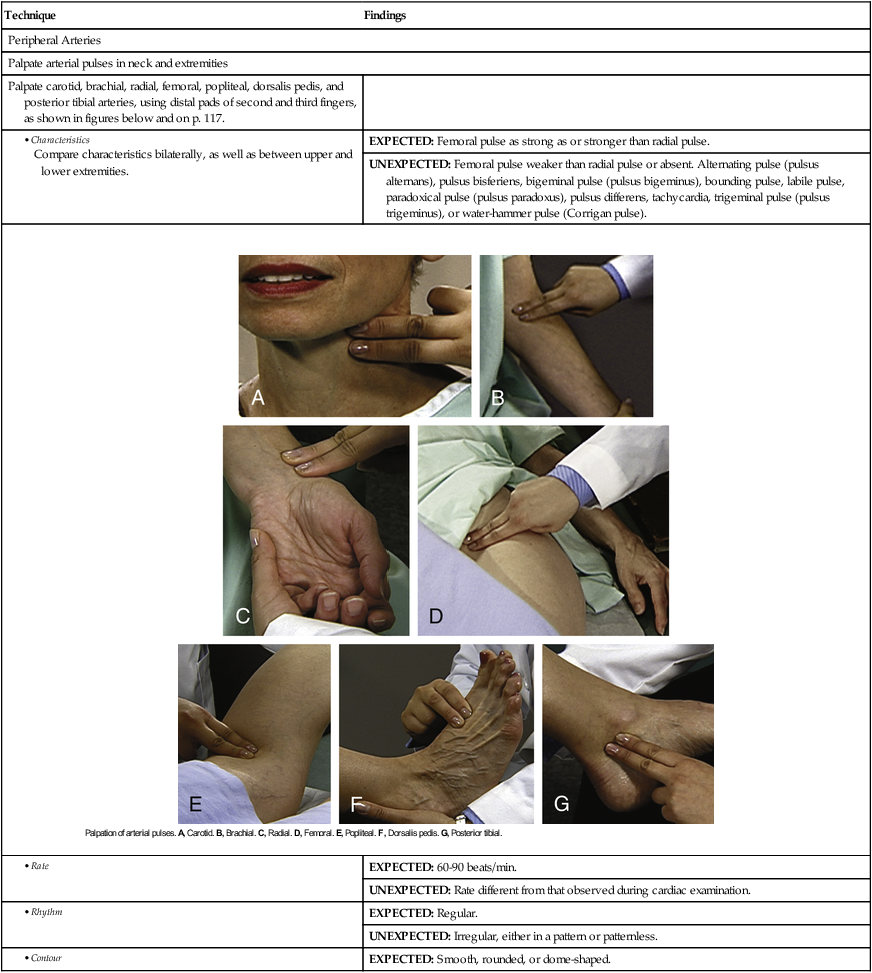
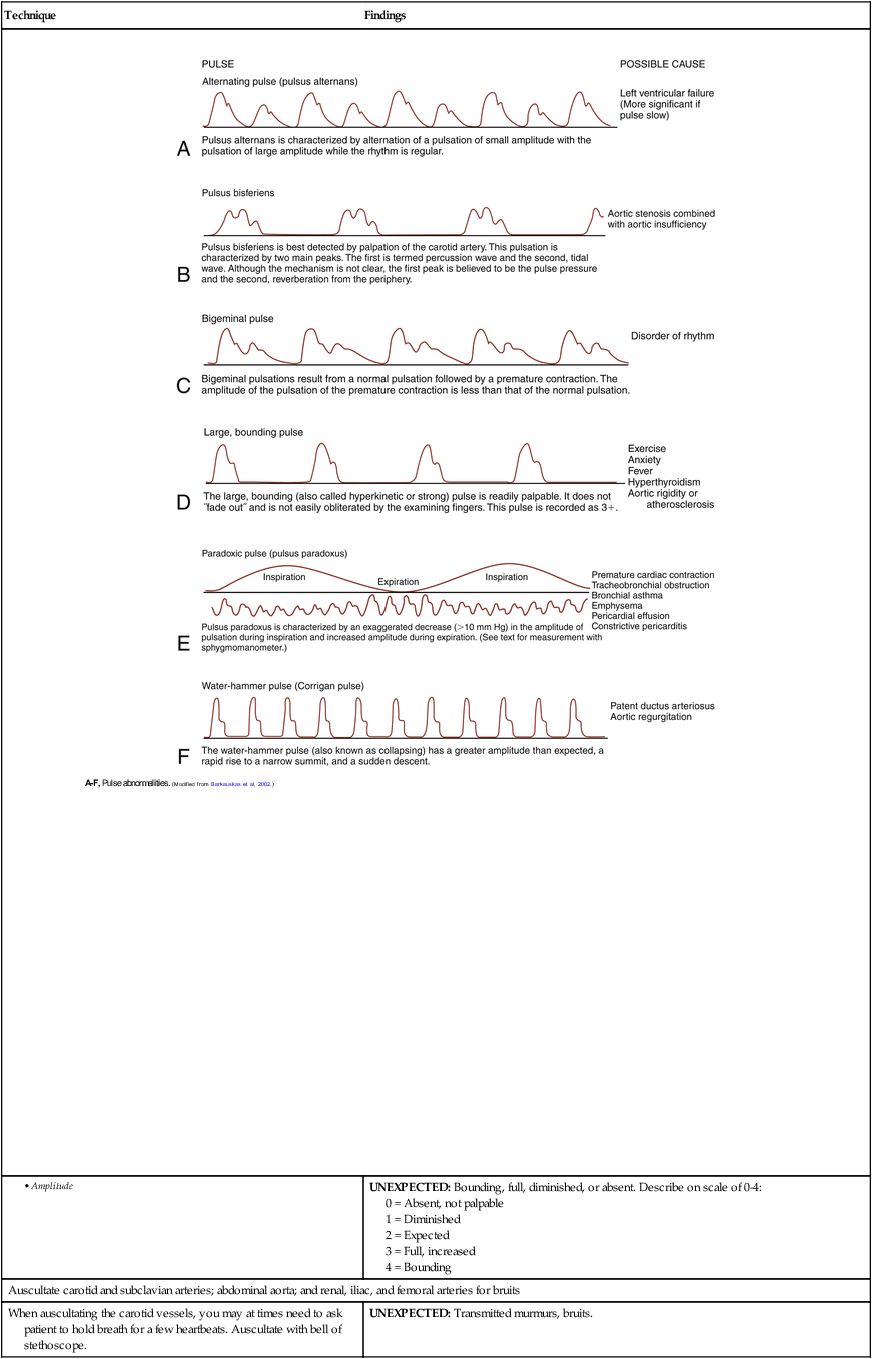
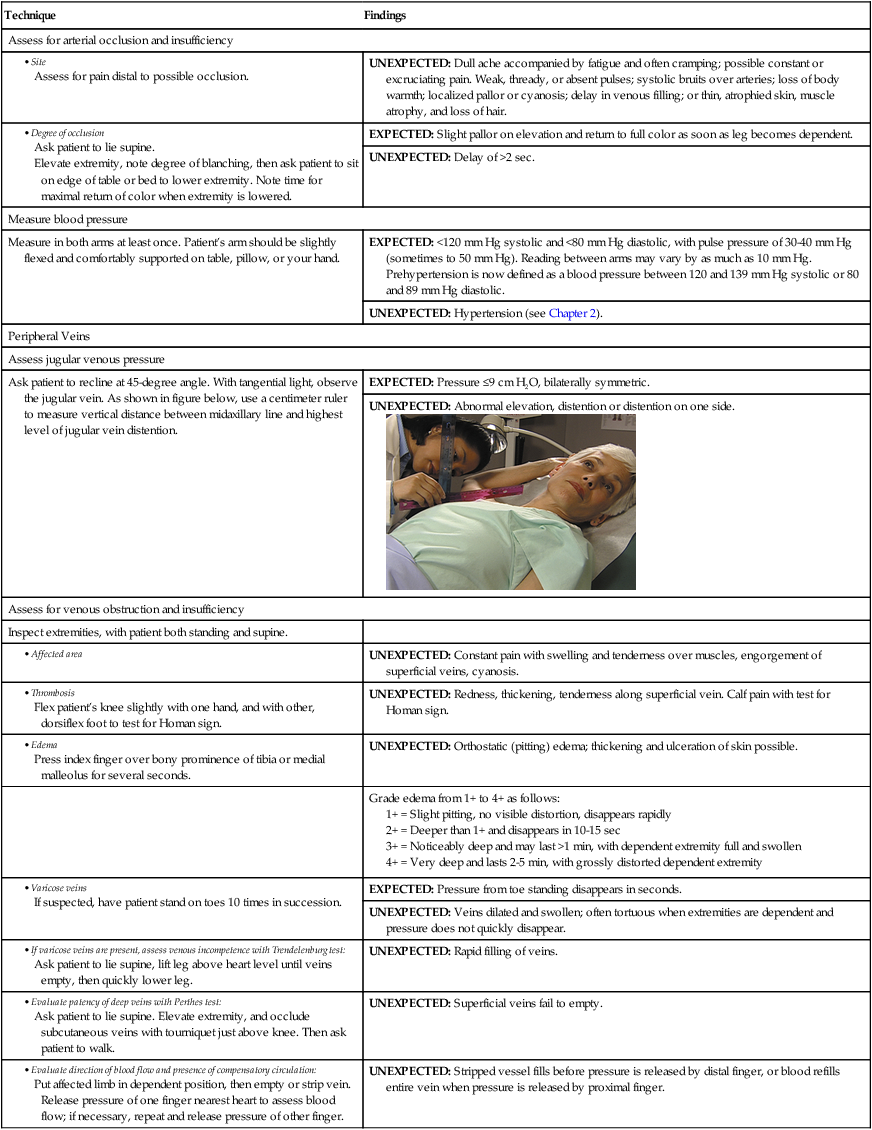
AIDS TO DIFFERENTIAL DIAGNOSIS
| Objective Data | Subjective Data |
| Arterial Aneurysm | |
| Generally asymptomatic until they dissect or compress an adjacent structure. With dissection, the patient may describe a severe ripping pain. | Pulsatile swelling along the course of an artery. Occurs most commonly in the aorta, although renal, femoral, and popliteal arteries are also common sites. A thrill or bruit may be evident over the aneurysm. |
| Venous Thrombosis | |
| Tenderness along the iliac vessels or the femoral canal, in the popliteal space, or over the deep calf veins. Deep vein thrombosis in the femoral and pelvic circulations may be asymptomatic. Pulmonary embolism may occur without warning. | Swelling may be distinguished only by measuring and comparing the circumference of the upper and lower legs bilaterally. There may be minimal ankle edema, low-grade fever, and tachycardia. Homan sign can be helpful but is not absolutely reliable in suggesting deep vein thrombosis. |
| Raynaud Phenomenon | |
| Involved areas will feel cold and achy, which improves on rewarming. In secondary Raynaud phenomenon, there can be intense pain and digital ischemia with necrosis at the tips. | With primary Raynaud phenomenon, there is triphasic demarcated skin pallor (white), cyanosis (blue), and reperfusion (red) within the extremities. The vasospasm may last from minutes to less than an hour. In secondary Raynaud phenomenon, ulcers may appear on the tips of the digits, and eventually the skin over the digits can appear smooth, shiny, and tight from loss of subcutaneous tissue. |
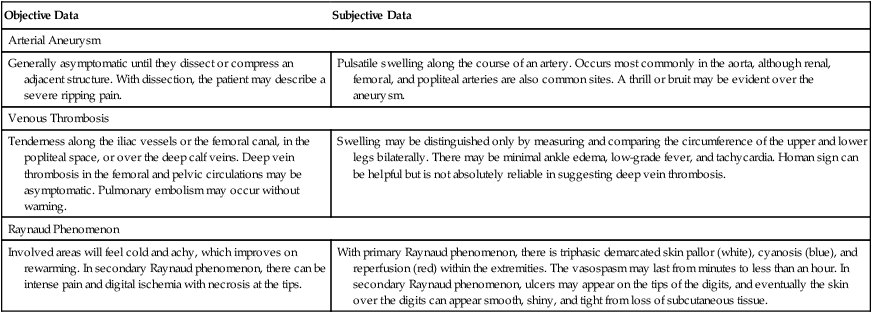
PEDIATRIC VARIATIONS
EXAMINATION
| Technique | Findings |
| Palpate arterial pulses in distal extremities (see Chapter 2) | |
| Auscultate arteries for bruits | |
| EXPECTED: In children, it is not unusual to hear a venous hum over internal jugular veins. There is usually no pathologic significance. | |
| Measure blood pressure (see Chapter 2) | |

AIDS TO DIFFERENTIAL DIAGNOSIS
| Subjective Data | Objective Data |
| Coarctation of the Aorta | |
| Most patients are asymptomatic unless severe hypertension or vascular insufficiency develops. In those settings, patients may experience symptoms of heart failure or vascular insufficiency of an involved upper extremity with activity. | Differences in systolic blood pressure readings when the radial and femoral pulses are palpated simultaneously. |

Sample Documentation
Vessels
Neck veins not distended. Both A and V waves are visualized. Jugular venous pressure (JVP) is 4 cm water at 45 degrees. Arterial pulses equal and symmetric, testing on a scale of 1-4.
| C | B | R | F | P | PT | DP | |
| L | 2 + | 2 + | 2 + | 2 + | 2 + | 2 + | 2 + |
| R | 2 + | 2 + | 2 + | 2 + | 2 + | 2 + | 2 + |

Vessels soft. No bruits are audible.
